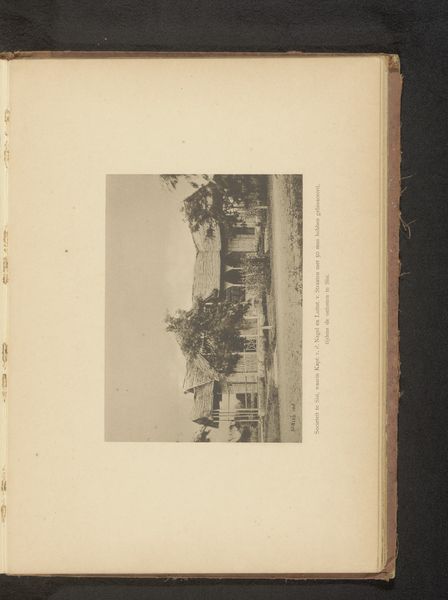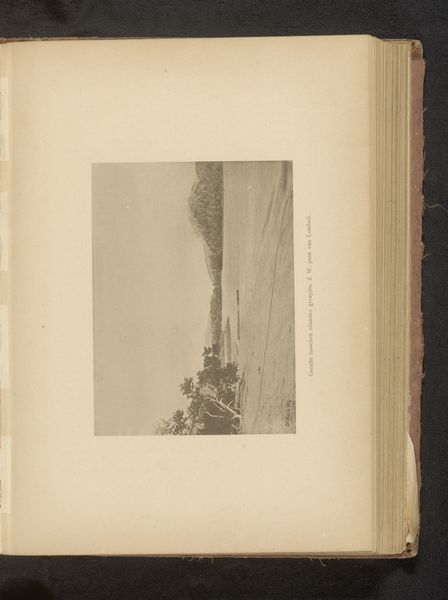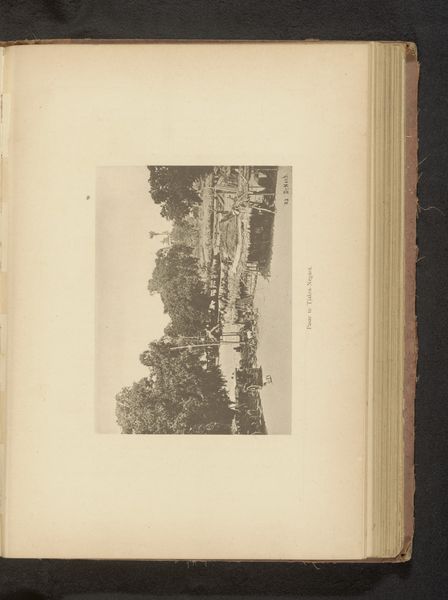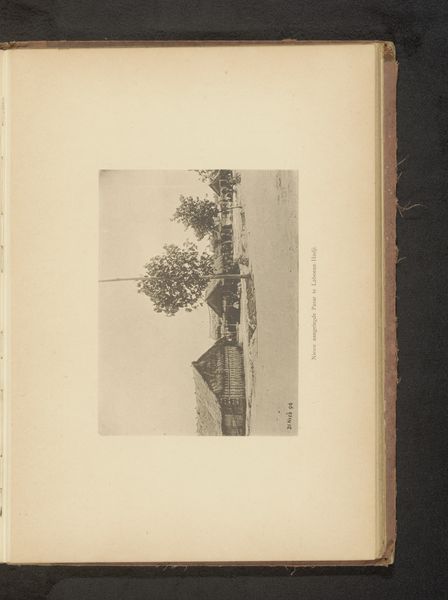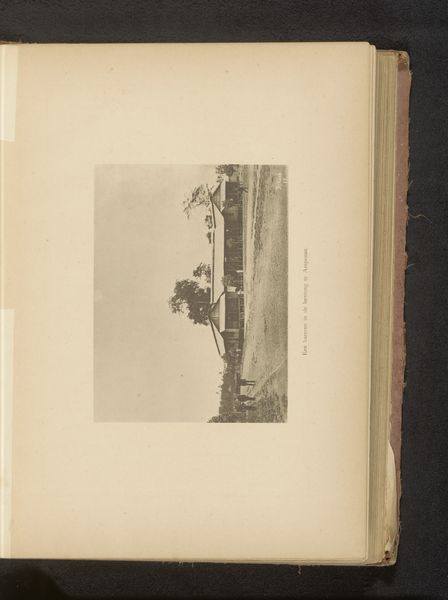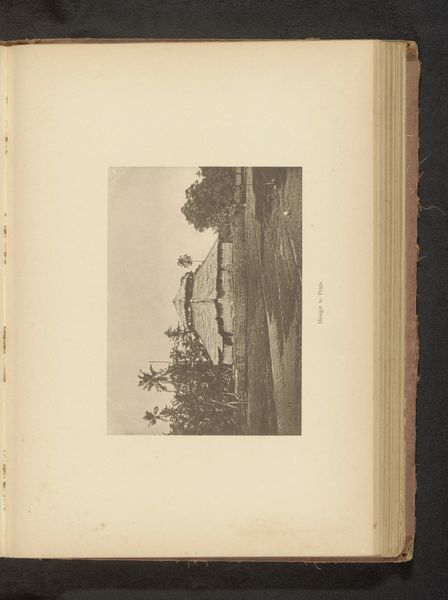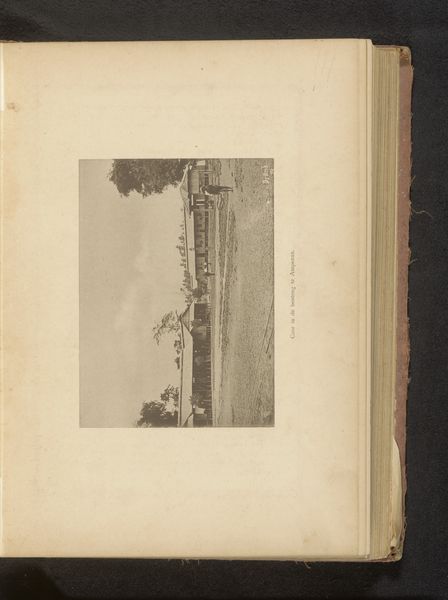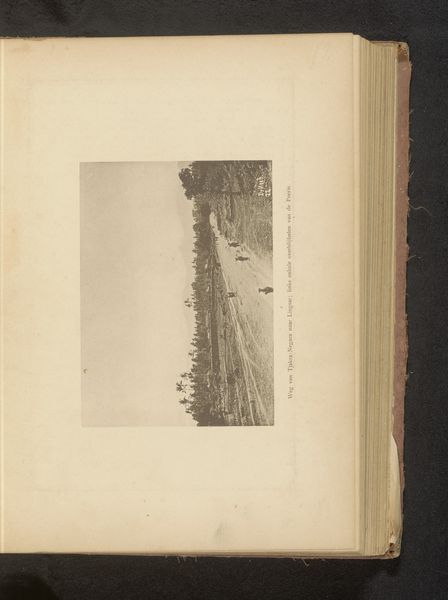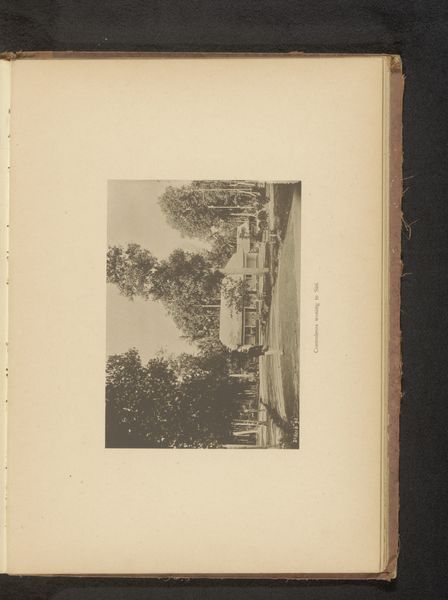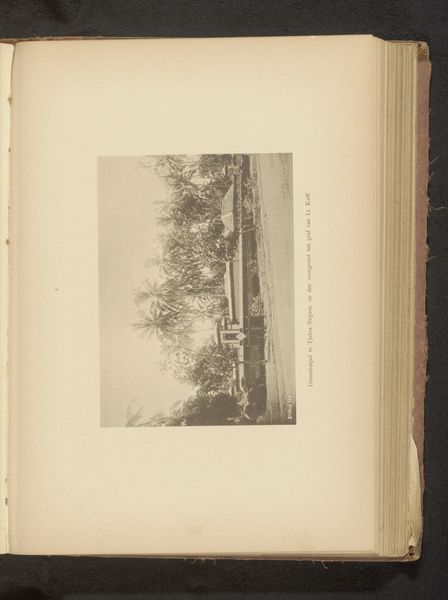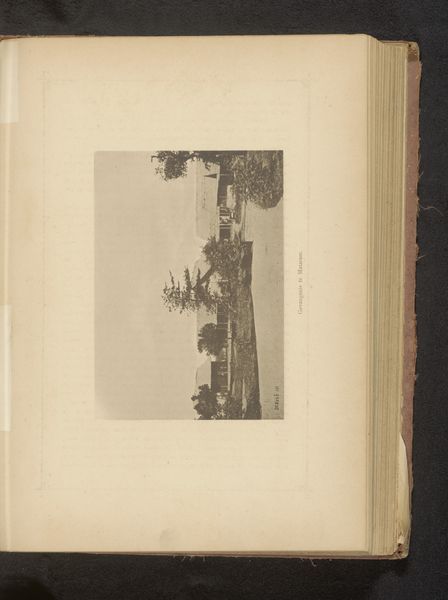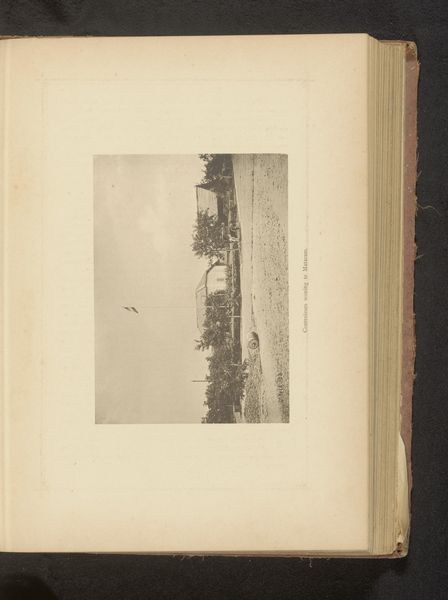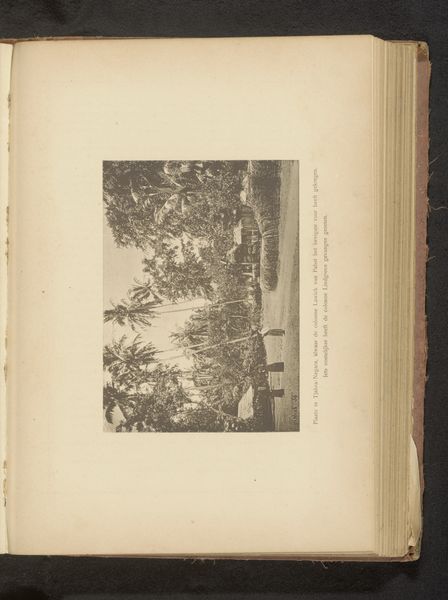
Groep onbekende personen bij de stallen van de cavalerie te Ampenan before 1897
0:00
0:00
photography, gelatin-silver-print
#
aged paper
#
homemade paper
#
ink paper printed
#
sketch book
#
hardpaper
#
landscape
#
paper texture
#
photography
#
personal sketchbook
#
journal
#
orientalism
#
gelatin-silver-print
#
sketchbook art
#
historical font
Dimensions: height 120 mm, width 166 mm
Copyright: Rijks Museum: Open Domain
Editor: Here we have "Groep onbekende personen bij de stallen van de cavalerie te Ampenan," a gelatin silver print from before 1897 by Christiaan Johan Neeb. The sepia tones and the visible aging of the paper give it a definite air of history. What jumps out at you when you see this image? Curator: Immediately, I'm struck by the gaze—or lack thereof. These figures, presumably local inhabitants pictured alongside colonial structures, are not necessarily invited to look back. Consider how this photograph, likely commissioned, participates in a broader visual culture that reinforced power dynamics. The “unknown persons” become objects within the frame. Who is controlling this narrative, and for whose consumption? Editor: So, it’s not just a simple snapshot; there’s a loaded history embedded in the composition itself? Curator: Precisely. Think about the context: late 19th century, colonial expansion, and the rise of photography as a tool for documentation—and often, control. How does the architecture in the photograph function as a symbol of colonial presence and power, contrasted with the seemingly informal grouping of the people? And whose perspective is privileged in its making and reception? Editor: It makes me think about who had access to photography and how that shaped the stories that were told. Curator: Absolutely. And who *didn’t* have access, and whose stories were actively being suppressed or misrepresented? What are the ethical implications when images are produced within such asymmetrical power relationships? The orientalist style adds another layer, reducing diverse realities into simplified visual tropes. What impact does it leave when history is told through such a lens? Editor: I hadn't considered the power dynamics so explicitly before. This really highlights the importance of questioning the photographer’s intent and the photograph's reception. Curator: It's a constant process of critical inquiry. By unpacking these visual layers, we can begin to understand how photography contributed to and continues to shape our understanding of colonial history and its enduring legacies.
Comments
No comments
Be the first to comment and join the conversation on the ultimate creative platform.
